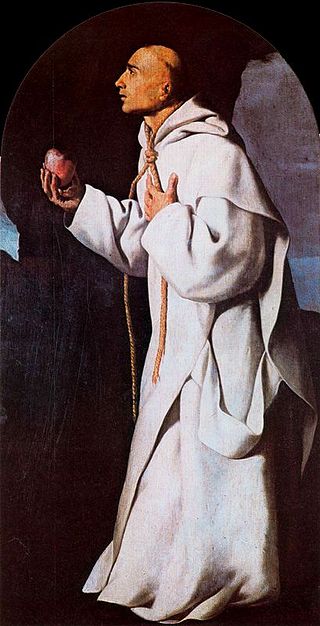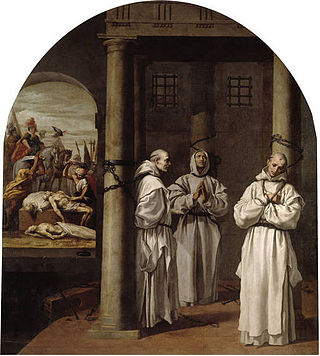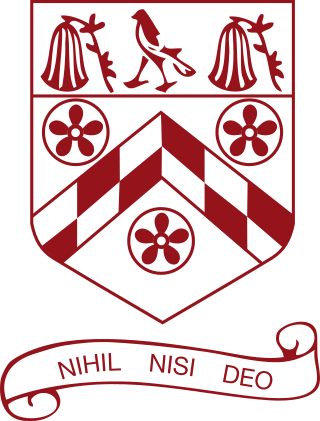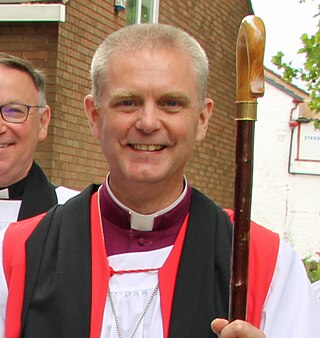Related Research Articles
Thomas Abel was an English priest who was martyred during the reign of Henry VIII. The place and date of his birth are unknown.

John Fisher was an English Catholic bishop, cardinal, and theologian. Fisher was also an academic and Chancellor of the University of Cambridge. He is honoured as a martyr and saint by the Catholic Church.

Margaret Plantagenet, Countess of Salisbury, was the only surviving daughter of George Plantagenet, Duke of Clarence, by his wife Isabel Neville. As a result of Margaret's marriage to Richard Pole, she was also known as Margaret Pole. She was one of just two women in 16th-century England to be a peeress in her own right without a husband in the House of Lords.

Hugh Faringdon,, earlier known as Hugh Cook, later as Hugh Cook alias Faringdon and Hugh Cook of Faringdon, was a Benedictine monk who presided as the last Abbot of Reading Abbey in the English town of Reading. At the dissolution of the monasteries under King Henry VIII of England, Faringdon was accused of high treason and executed. He was declared a martyr and beatified by the Catholic Church in 1895.

Richard Reynolds, O.Ss.S was an English Bridgettine monk executed in London for refusing the Oath of Supremacy to King Henry VIII of England. He was canonised by Pope Paul VI in 1970, among the Forty Martyrs of England and Wales.

John Houghton, OCart was a Catholic priest of the Carthusian order and the first martyr to die as a result of the Act of Supremacy by King Henry VIII of England. He was also the first of the Carthusians to die as a martyr. As one of the Carthusian Martyrs of London he is among the Forty Martyrs of England and Wales.

The English Benedictine Congregation (EBC) is a congregation of autonomous abbatial and prioral monastic communities of Catholic Benedictine monks and nuns. It is technically the oldest of the nineteen congregations affiliated to the Benedictine Confederation.

William Exmew, O.Cart was an English Catholic priest and Carthusian hermit. He was hanged, drawn, and quartered at Tyburn and is honoured as a martyr by the Catholic Church. Exmew and his brother Carthusian martyrs were beatified by Pope Leo XIII on 9 December 1886.

The Carthusian Martyrs of London were the monks of the London Charterhouse, the monastery of the Carthusian Order in the City of London who were put to death by the English state in a period lasting from the 4 May 1535 until the 20 September 1537. The method of execution was hanging, disembowelling while still alive and then quartering. Others were imprisoned and left to starve to death. The group also includes two monks who were brought to that house from the Charterhouses of Beauvale and Axholme and similarly dealt with. The total was 18 men, all of whom have been formally recognized by the Catholic Church as martyrs.

John Stone, O.E.S.A was an English Augustinian friar who was executed, probably in December 1539; he was canonized in 1970 by Pope Paul VI, and is one of the Forty Martyrs of England and Wales. He was a doctor of theology from Canterbury.

St John's Abbey, also called Colchester Abbey, was a Benedictine monastic institution in Colchester, Essex, founded in 1095. It was dissolved in 1539. Most of the abbey buildings were subsequently demolished to construct a large private house on the site, which was itself destroyed in fighting during the 1648 siege of Colchester. The only substantial remnant is the elaborate gatehouse, while the foundations of the abbey church were only rediscovered in 2010.
Events from the 1530s in England.
Richard Whiting was an English Catholic priest and the last Abbot of Glastonbury.

John Forest was an English Franciscan friar and martyr. Confessor to Queen Catherine of Aragon, Forest was burned to death at Smithfield for "heresy", in that he refused to acknowledge the King as head of the church.

Dom Bede Camm, O.S.B., was an English Benedictine monk and martyrologist. He is best known for his many works on the English Catholic martyrs, which helped to keep their memories alive in the newly reemerging Catholic Church of Victorian England.

Blessed Hugh Faringdon is a Catholic state secondary school in Reading in Berkshire, England. The school has approximately 850 pupils on roll and around 100 teaching and non teaching staff. The school specialises in Mathematics and the Performing Arts. Blessed Hugh Faringdon is one of the many Catholic schools in and around Reading but the only secondary and is under the Trusteeship of the Diocese of Portsmouth. The school is a member of the Partners in Excellence group of schools.

The Bishop of Chester is the Ordinary of the Church of England Diocese of Chester in the Province of York.
John Eynon, OSB was a monk of the Order of Saint Benedict who acted as the pastor of the parish of St Giles in Reading, England. Copies of Robert Aske's proclamation setting forth the reasons behind the Pilgrimage of Grace had circulated at Reading. Eynon was one of those who had made a copy.
Nine Martyrs of England and Wales, also known as Hugh Faringdon and Eight Companion Martyrs are a group of clergy and laypersons who were executed on charges of treason and related offences in the Kingdom of England. Eight of these occurred in 1539, during the reign of King Henry VIII, and one other in 1572. They are considered martyrs in the Roman Catholic Church and were beatified on 13 May 1895 by Pope Leo XIII.
References
- 1 2 3 4 Ashdown-Hill, John (2009) Mediaeval Colchester's Lost Landmarks. Published by The Breedon Books Publishing Company Limited. ( ISBN 978-1-85983-686-6)
- 1 2 3 Fitzpatrick, Maurice P., "Blessed John Beche: a martyr of the Brentwood diocese", p.4, Catholic Herald, 27 November 1959
- ↑ Camm O.S.B.,Dom Bede. "Blessed John Forest". Lives of the English Martyrs Declared Blessed by Pope Leo XIII, Vol. I, p.388, Longmans, Green and Co., London 1914
- 1 2 3 Macpherson, Ewan. "Blessed John Beche." The Catholic Encyclopedia. Vol. 2. New York: Robert Appleton Company, 1907. 28 May 2013